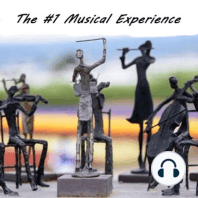16 min listen

Sebastian Bach Harpsichord Concerto no. 1 in D minor, BWV 1052 - Complete Performance
Sebastian Bach Harpsichord Concerto no. 1 in D minor, BWV 1052 - Complete Performance
ratings:
Length:
23 minutes
Released:
Dec 24, 2019
Format:
Podcast episode
Description
Why We Should Expose Our Kids To Classical Music https://ourtownlive.net.Sebastian Bach Harpsichord Concerto no. 1 in D minorThis work, scored for harpsichord, two violins, viola and continuo section, and clocking in 22 minutes, is tought to be based o a lost violin concerto, which was later arranged as an organ concerto in 1728 for use in two of Bach's cantatas. This concerto has remained the most popular of the collection from the 19th century onwards; Felix Mendelssohn played it and Brahms wrote a cadenza for it; the first publication of it was in 1838 by the Kistner Publishing House. It was often played and recorded with the piano in the 20th century, though with the rise of historically informed performance from the 1960s, it is now regularly played on the harpsichord again. Get bonus content on Patreon Hosted on Acast. See acast.com/privacy for more information.
Released:
Dec 24, 2019
Format:
Podcast episode
Titles in the series (100)
Beethoven Symphony no. 5 in Cm, Op. 67 - III. Allegro attacca: Why We Should Expose Our Kids To Classical Music https://ourtownlive.net #herbw79The Symphony No. 5 in C minor of Ludwig van Beethoven, Op. 67, was written between 1804 and 1808. It is one of the best-known compositions in classical music and one... by The #1 Musical Experience